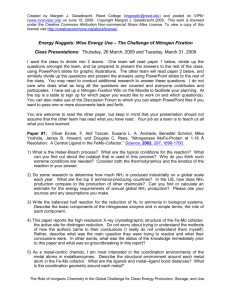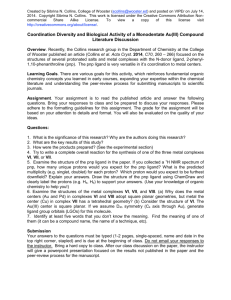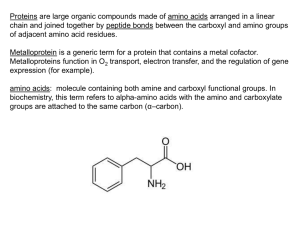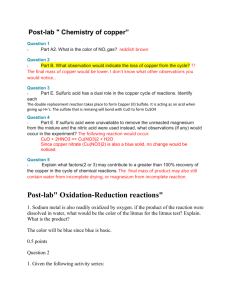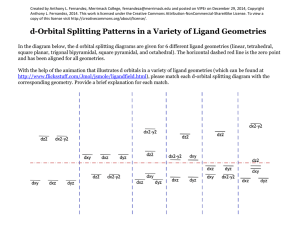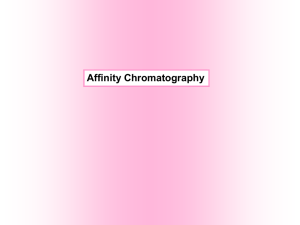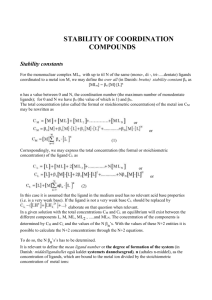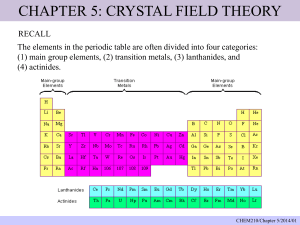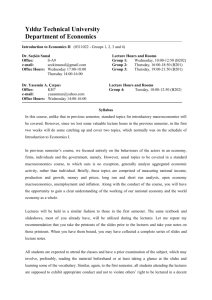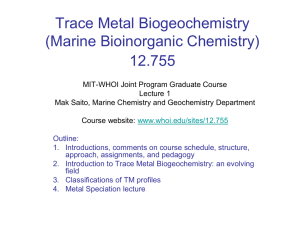The CBC Method of electron counting
advertisement
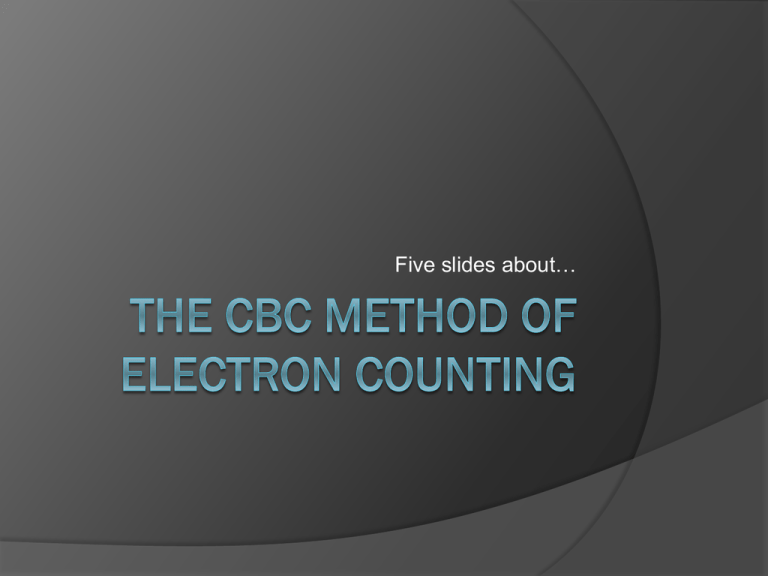
Five slides about… Consider… The ‘ionic’ method says 2 Cp6e- each 2 Me2e- each Ligand total 16e (-1 each) (-1 each) -4 So Ti+4 (d0) since it is neutral 16e- exception? Problem…is this really a +4 metal interacting with four anions? The ‘covalent’ method says 2 Cp 5e- each 2 Me 1e- each Ligand total 12e So Ti0 (d4) since it is neutral 16e- exception? Problem…assuming the d-electrons are nonbonding how is this diamagnetic? CBC ligand classification L Ligand donates two electrons CO, phosphines, alkenes X Ligand donates one electron H, halides, alkyl Z Ligand donates zero electrons boranes How to count? [MLlXxZz] Total electron count From ligands: 2l + x From metal: m m + 2l + x Valence number (VN) for the metal = x + 2z Ligand bond number (LBN) for the metal = l + x + z dn count for metal = m - VN Current example X H3C• L L2X X Counting Metal is classified as ML4X4 Electron count: 4 + 10 + 2 = 16 VN: 4 LBN: 8 dn: 0 What have we learned? Electrons: 16 VN: 4 Classification: ML4X4 Ti 0 Electron Count 8 ML2 Valence 1 2 10 MLX2 12 13 ML4 ML3X ML2X2 MLX3 MX4 6% 11 ML3 ML2X 3 4 9 ML4X ML2X3 <1% http://www.columbia.edu/cu/chemistry/groups/parkin/mlxz.htm 16 ML4X2 1% 18 ML7 1% ML6X <1% ML5X2 1% ML4X3 5% ML3X4 6% 17 ML6 2% ML5X ML3X3 <1% ML2X4 7% 15 ML5 ML3X2 MLX4 1% 14 ML6X2 4% ML5X3 9% ML4X4 49% ML5X4 4% A different view 60 Ti 50 % 40 30 20 10 0 6 7 8 9 10 11 12 13 14 15 16 17 18 Electron Count http://www.columbia.edu/cu/chemistry/groups/parkin/mlxz.htm What about valence? VN: 4 is not saying it is +4 Gives the d0 count 16 14 Ti 12 % 10 8 6 4 2 0 0 http://www.columbia.edu/cu/chemistry/groups/parkin/mlxz.htm 1 2 Valence Number 3 4 What is LBN? Not coordination number Number of sites on the metal LBN: 8 while CN: 12 70 Ti 60 50 % 40 30 20 10 0 2 3 http://www.columbia.edu/cu/chemistry/groups/parkin/mlxz.htm 4 5 6 7 Ligand Bond Number 8 9 Further readings M.L.H. Green J. Organomet. Chem. 1995, 500, 127-148. G. Parkin, in Comprehensive Organometallic Chemistry III, Volume 1, Chapter 1; R.H. Crabtree and D.M.P. Mingos (Eds), Elsevier, Oxford, 2006. http://www.columbia.edu/cu/chemistry/grou ps/parkin/cbc.htm
